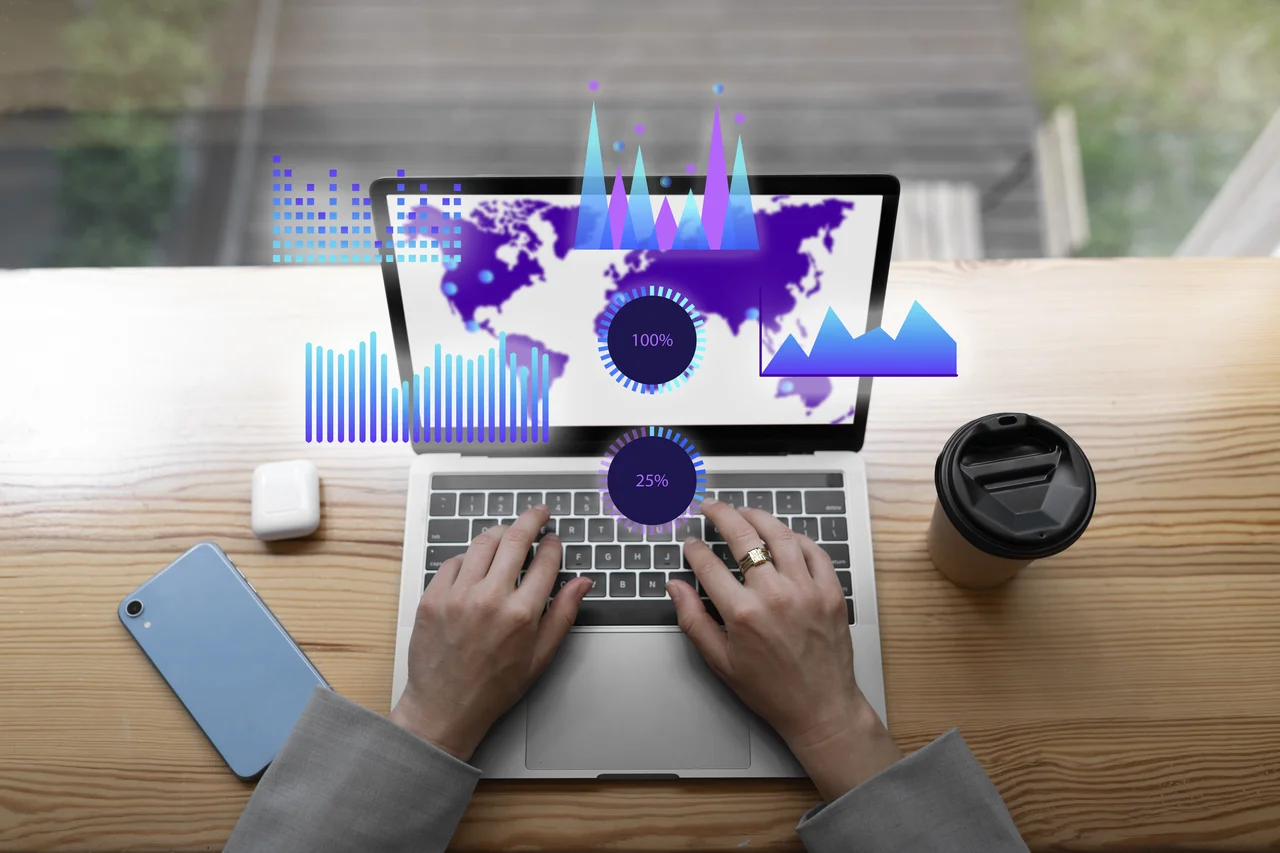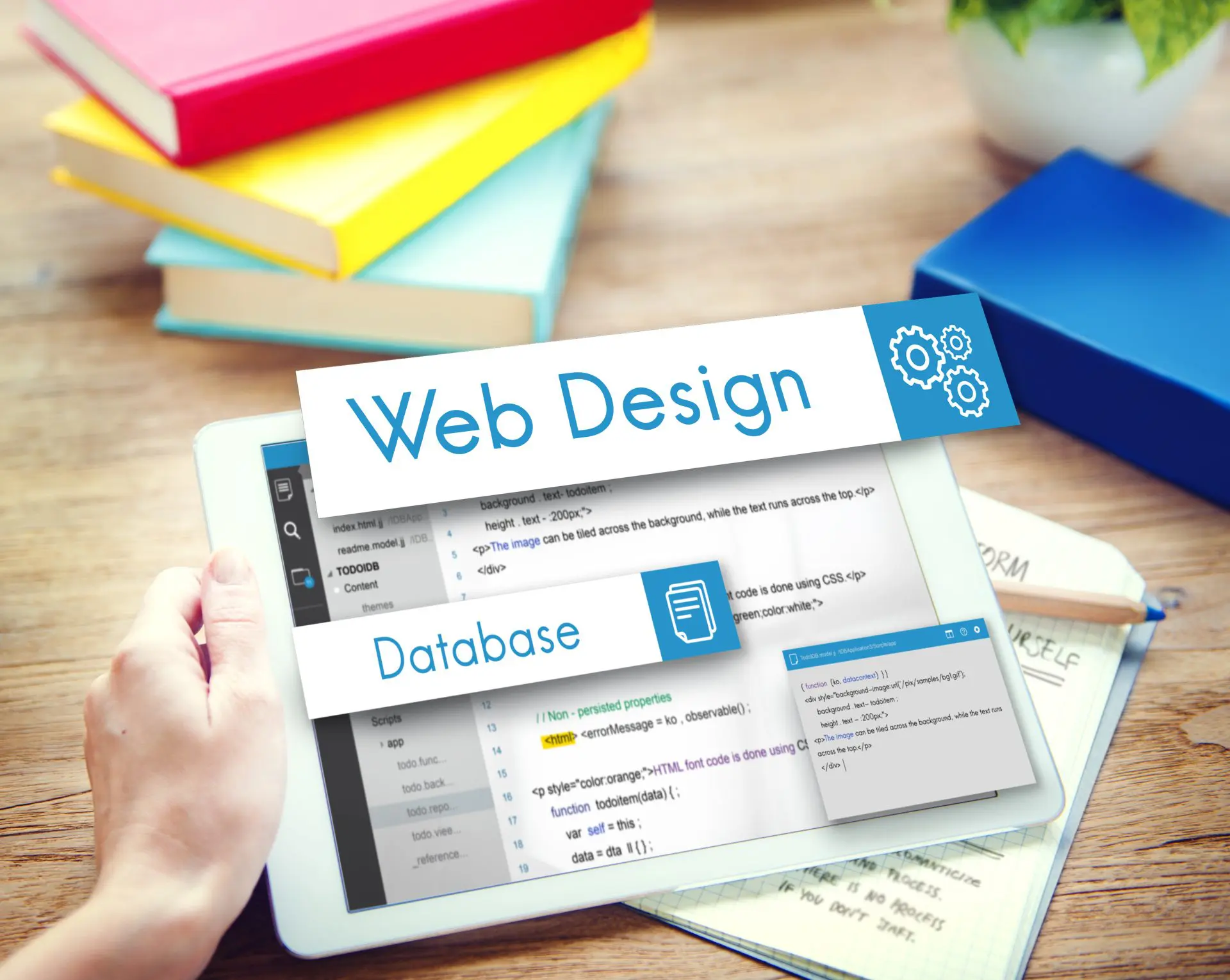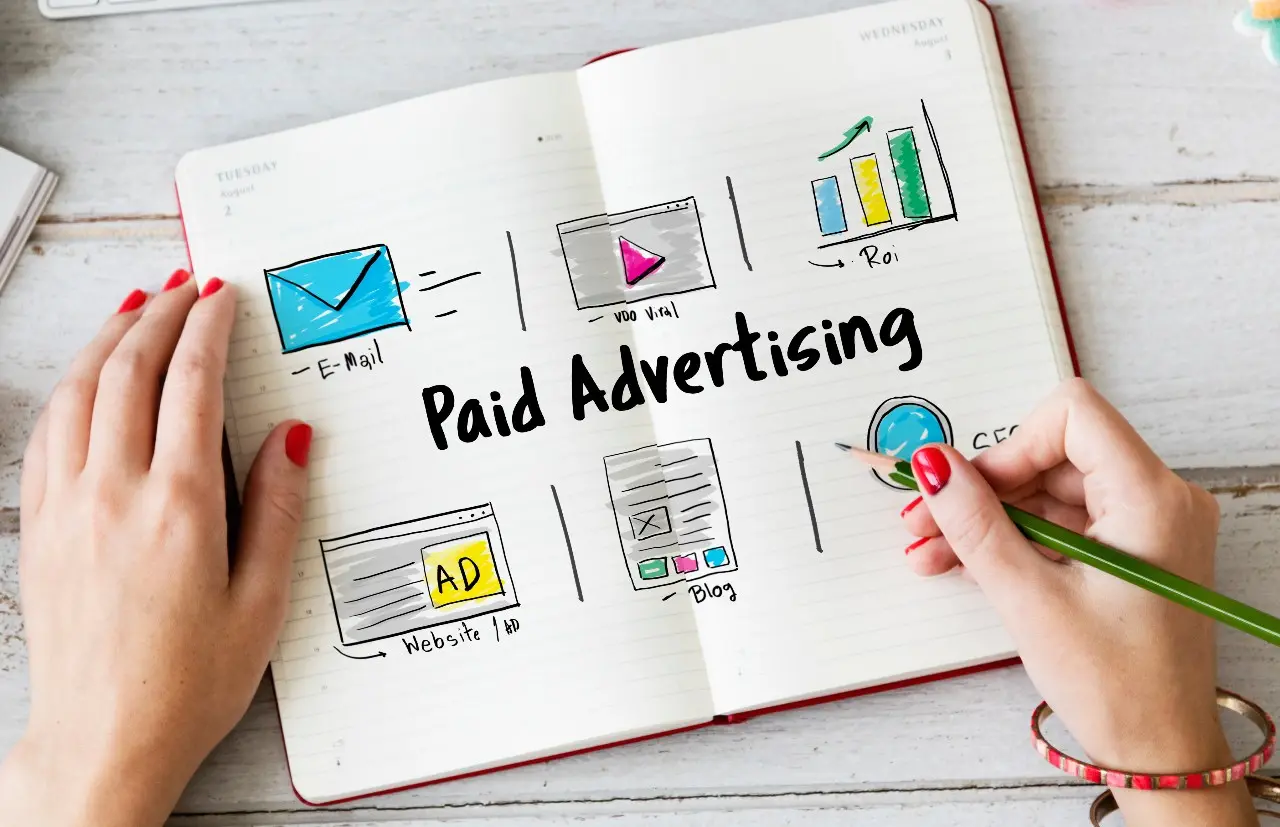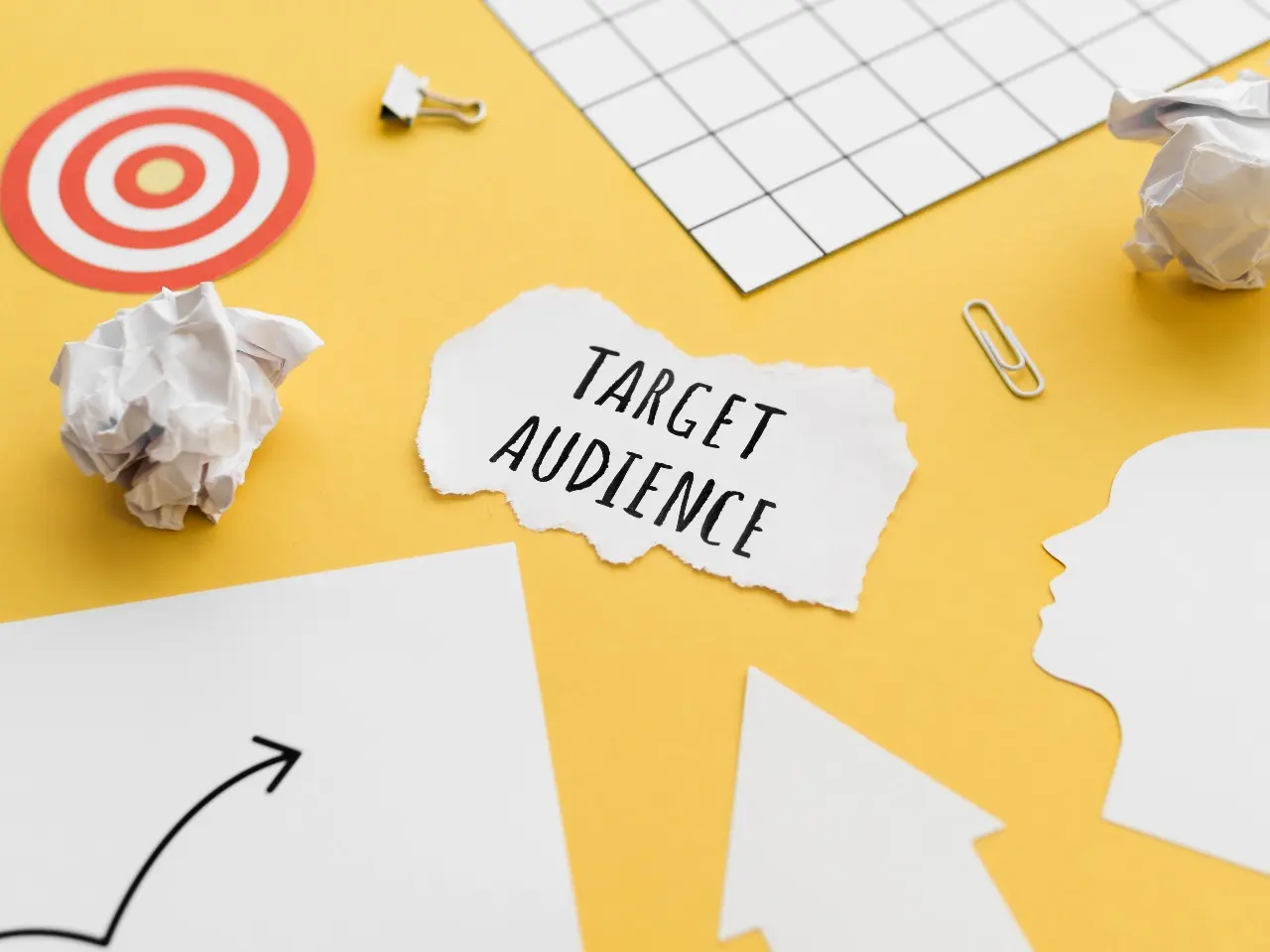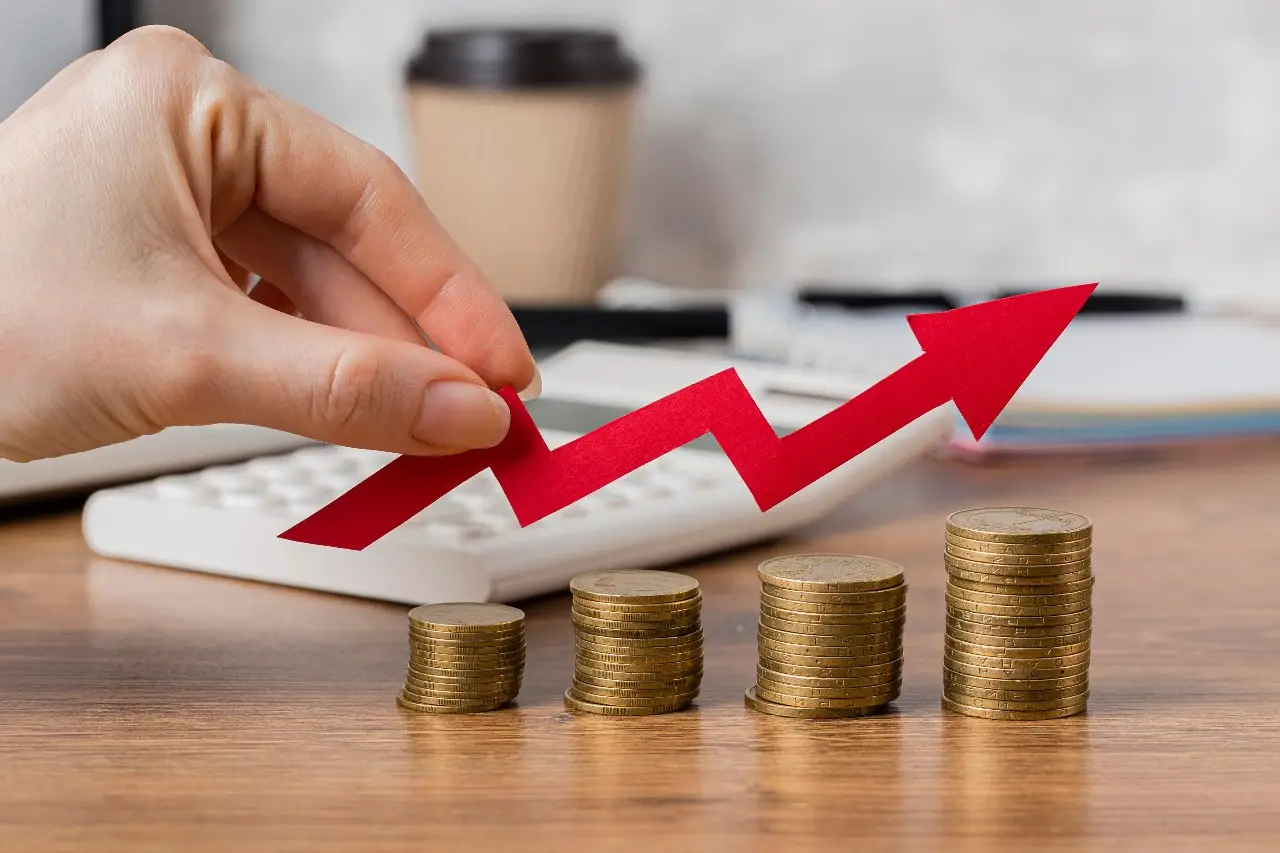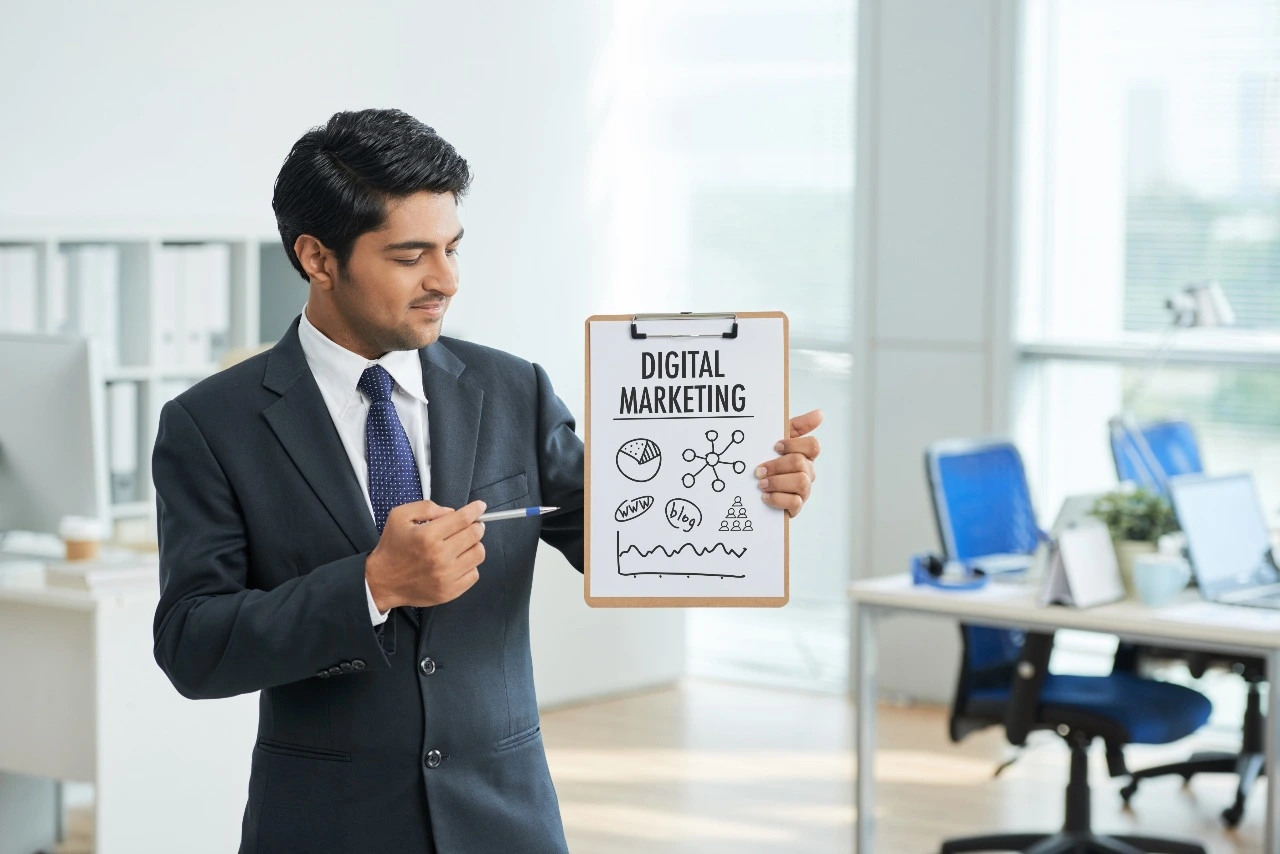Listen to article
In today’s competitive digital landscape, understanding the nuances of “organic vs paid marketing performance” is crucial for business success. While both organic and paid strategies aim to drive traffic, generate leads, and boost conversions, they operate on different principles and deliver varying results. The challenge lies in determining the optimal balance between these two approaches to maximize marketing ROI.
Do you know that Pay-per-click (PPC) ads can boost brand awareness by 46%? Or that organic search is the leading source of website traffic?
In this article, we’ll dive deep into the performance benchmarks of organic and paid digital marketing, comparing their effectiveness across various metrics. By analyzing key statistics and trends, you’ll gain actionable insights to refine your marketing strategy.
Amplifying Brand Credibility with Integrated Paid and Organic Tactics
Building a brand that resonates with today’s discerning audiences requires more than just visibility—it demands trust, authenticity, and consistent engagement. An integrated approach combining paid strategies with organic efforts not only maximizes reach but also establishes a lasting emotional connection with your audience. Paid campaigns can swiftly place your brand in front of your target demographic, while organic strategies nurture trust and loyalty over time. Together, they form a powerful duo for enhancing brand perception in a crowded digital space.
- Pay-per-click (PPC) ads can boost brand awareness by 46%. Source
- Search ads can increase brand awareness by approximately 80%. Source
- Brand mentions significantly influence people’s decision to click on YouTube and Amazon search advertisements, accounting for 33% of clicks. Source
- 60% of creators who share thought leadership content believe it enhances their organization’s brand reputation. Source
- 88% of business decision-makers have increased respect and admiration for organizations that demonstrate thought leadership, with this figure rising to 89% among C-suite executives. Source
The data underscores a crucial truth: while paid strategies can generate immediate visibility, long-term trust is cultivated through thoughtful, value-driven content. By incorporating thought leadership and leveraging brand mentions strategically, businesses can establish themselves as industry authorities while benefiting from increased consumer engagement.
Pro Tip:
Pair your PPC campaigns with consistent thought leadership content to secure both short-term results and long-term loyalty. Utilize monitoring tools to track brand mentions and sentiment analysis, ensuring you’re proactively shaping the narrative around your brand. For businesses looking to streamline their approach, exploring full-service marketing solutions can provide a cohesive strategy that integrates paid and organic efforts seamlessly.
Why Organic and Paid Marketing Need Each Other to Thrive
When it comes to driving website traffic, the question isn’t organic vs. paid—it’s about how you can strategically combine both. Organic search establishes trust and authority over time, while paid campaigns deliver instant results. Together, they form a powerful duo that amplifies your brand’s visibility and helps you reach audiences at every stage of their journey. To make informed decisions about where to allocate your resources, it’s important to understand the performance benchmarks of both approaches.
- Organic search remains the top source of website traffic. Source
- PPC (pay-per-click) campaigns generate twice as much traffic compared to SEO alone. Source
- Around 50% of online users can’t tell the difference between paid and organic search results. Source
The real takeaway? It’s not a matter of picking one over the other. Paid ads can provide the initial visibility needed to capture attention, but an optimized organic strategy ensures your presence endures and grows without constantly increasing ad spend. With half of consumers unable to distinguish between paid and organic results, blending the two allows you to stay top of mind and dominate search results.
Pro Tip:
Maximize your return on investment by using insights from your PPC campaigns—such as high-performing keywords and demographics—as a testing ground to refine your organic content strategy. This synergy will ensure both channels work together to achieve long-term success.
Organic vs. Paid Search: CTR and Conversion Insights That Drive Results
When it comes to search engine marketing, understanding how users engage with organic and paid search results is a game-changer for campaign strategy. It’s not just about visibility—it’s about connecting with user intent at the right moment. Both approaches have unique strengths, but the numbers reveal just how impactful paid search can be in driving immediate actions compared to its organic counterpart. Let’s dive into key stats that every marketer should know:
- The top three paid search ads capture 46% of clicks on the first page. Source
- One-third of users (33%) click on a paid search ad when it directly addresses their query. Source
- Text-based paid ads are more likely to attract clicks, with 49% engagement compared to shopping (31%) and video ads (16%). Source
- Visitors from PPC ads are 50% more likely to purchase than those from organic search. Source
- PPC website traffic converts 50% better than organic site visitors. Source
Paid search emerges as a powerhouse of intent-driven conversions. The combination of prime ad placement, relevance to user queries, and the immediacy of paid campaigns makes it an undeniable asset for businesses looking to rapidly drive results. However, the key to leveraging this potential lies in precision. Successful campaigns go beyond just bidding for top spots—they’re about delivering tailored, user-focused content that aligns directly with the searcher’s intent.
Pro Tip:
To maximize your ROI in paid search, focus on continuous improvement. Regularly A/B test ad copy to identify what resonates with your audience, refine your keyword strategy to eliminate wasted ad spend, and ensure your landing pages are optimized for user experience and conversion. By aligning user intent with clear, actionable messaging, you can unlock the full potential of both your CTR and conversion rates.
Unlocking the Power of Google Paid Search: Key Insights for Maximum ROI
In a competitive digital landscape, paid search advertising has become a cornerstone for businesses aiming to capture high-intent audiences. With users increasingly turning to search engines for purchase decisions, paid search offers an unparalleled opportunity to connect with potential customers at the exact moment they’re ready to act. To truly harness its power, understanding core performance data is essential for fine-tuning your strategy and achieving measurable ROI.
- Google’s pay-per-click (PPC) ads command an impressive 64.6% of all clicks when users are searching to buy, showcasing their effectiveness in targeting high-intent consumers. Source
- Paid ads in search results generate 45% of all page clicks, underscoring the visibility advantage that strategic ad placements provide. Source
- The top three PPC ad positions capture 46% of all clicks, making premium placement a vital factor in standing out in competitive search landscapes. Source
Takeaway: Strategic Placement and Optimization Drive Paid Search Success
With paid search dominating a significant share of user clicks, especially among shoppers with high purchase intent, businesses can’t afford to overlook the importance of well-positioned ads. Securing visibility in the coveted top three paid positions can significantly impact click-through rates and conversions, but it doesn’t stop there. Continuous optimization—be it through A/B testing ad creatives, refining keyword targeting, or enhancing landing pages—is crucial for staying competitive and maximizing return on ad spend.
Pro Tip:
Invest in tools like Google Ads’ Quality Score insights to evaluate ad relevance and user experience. A higher score not only improves your ad rank but can also lower your cost-per-click, allowing you to stretch your budget further while driving better results.
When developing a broader strategy that integrates both organic and paid channels, businesses might find it helpful to explore proven digital marketing strategies for small businesses. These approaches can offer a roadmap for maximizing online visibility while balancing costs and resources effectively.
Overcoming the Challenges of Zero-Click Searches and Ad Blockers
The digital landscape is becoming increasingly complex, with user behaviors shifting and technology evolving rapidly. Today, zero-click searches and ad blockers present significant challenges to marketers trying to drive traffic and conversions. These trends highlight the importance of not only creating compelling content but also optimizing for visibility beyond the traditional click-through model. Successfully navigating these obstacles requires a strategic, multifaceted approach.
- For the keywords tracked, fewer than 60% of searches lead to a click on Google. Source
- Ad blockers are present on over 615 million devices, indicating a substantial portion of users who may not see your paid advertisements. Source
The rise in zero-click searches means users often find their answers directly within search engine results, while the popularity of ad blockers limits the reach of paid campaigns. To thrive in this environment, marketers must focus on organic strategies like securing featured snippets, optimizing for voice search, and leveraging structured data to increase visibility. Furthermore, diversifying efforts to include content marketing, influencer collaborations, and email campaigns can help maintain consistent engagement despite these barriers.
Pro Tip:
Turn obstacles into opportunities by enriching your content with value-focused insights that don’t rely solely on clicks. Additionally, consider experimenting with non-click-based metrics like brand mentions, social shares, and direct traffic to measure success beyond traditional KPIs.
The Role of SEO, Blogging, and Strategic Budgets in B2B Marketing Success
In the complex and competitive landscape of B2B marketing, finding a balance between organic and paid strategies is what sets thriving businesses apart. Search engine optimization (SEO) and consistent blogging aren’t just optional tactics—they’re cornerstones for driving sustainable growth. For organizations looking to make their marketing efforts more impactful, prioritizing organic strategies while strategically allocating budget for paid initiatives can yield transformative results. Let’s explore the data behind why organic efforts like SEO and blogging remain essential while paid search continues to gain traction in B2B marketing.
- 57% of B2B marketers identify SEO as the most effective strategy for lead generation, outranking all other marketing initiatives. Source
- SEO contributes to an impressive 14.6% of all leads generated for B2B businesses. Source
- Nearly 60% of B2B companies report that SEO has a significant positive impact on their ability to generate leads. Source
- B2B companies that commit to consistent blog publishing see a 67% boost in monthly leads compared to those that don’t utilize blogging effectively. Source
- Blogging is deemed the most critical content marketing tactic by 52% of B2B marketers. Source
- Blogs are considered one of the most valuable marketing channels by 59% of B2B marketers. Source
- Meanwhile, 40% of B2B marketers plan to increase their budgets for paid search, reflecting a strategic push toward combining organic and paid efforts. Source
Takeaway: The Organic-Paid Symbiosis is the Key to Long-Term Success
The stats speak for themselves: SEO and blogging are non-negotiables for B2B marketers looking to dominate organic search results and build lasting relationships with their target audience. However, while organic strategies excel in generating long-term value, pairing them with well-planned paid campaigns amplifies visibility and fills any short-term gaps in outreach. Companies that can harmonize these approaches—leveraging thoughtful, consistent content with strategic paid search investments—position themselves to achieve both immediate wins and sustained growth over time.
Pro Tip:
Use data to guide your strategy. Invest in identifying high-intent keywords for SEO, and create in-depth blog content that answers pressing industry questions. Simultaneously, test ad copy and targeting in paid search to refine audience engagement and insights that can inform your organic efforts. This integrated approach ensures you’re not only driving traffic but also connecting with the right decision-makers at every stage of the funnel.
Striking the Right Balance: Paid Search Investment vs. Conversion Outcomes
When it comes to digital advertising, the disparity in ROI between paid search and organic strategies can significantly shape your marketing decisions. Paid search often offers immediate measurable results, whereas organic search builds visibility and authority over time. This contrast makes it imperative for businesses to understand how to allocate resources effectively across both channels.
- Small to medium-sized businesses allocate seven times more of their marketing budget to PPC than to SEO. Source
- Visitors from PPC ads are 50% more likely to make a purchase compared to those who arrive through organic search. Source
This data underscores the immediate advantages of paid search in driving conversions. However, relying solely on PPC can be a risky strategy, as ad performance often declines without consistent ad spend. Organic search, while slower to yield results, provides a foundation for sustainable growth. Diversifying your marketing strategy ensures that you’re not putting all your eggs in one basket.
Pro Tip:
Combine the strengths of both strategies by using PPC to capture quick wins while investing in high-quality content and technical SEO to build a long-lasting organic presence. Tools like Google Ads for paid campaigns and platforms such as SEMrush or Ahrefs for SEO optimization can help you strike the right balance.
Conclusion
The interplay between organic and paid digital marketing strategies is a balancing act that requires both precision and adaptability. As highlighted, organic search delivers sustainable traffic and builds brand credibility over time, while paid strategies provide immediate visibility and often outpace organic in terms of click-through and conversion rates. Together, they form a synergy that can drive both short-term wins and long-term growth.
However, the data makes one thing clear: no single strategy holds all the answers. For businesses aiming to maximize their marketing potential, the key lies in integration. By combining high-quality content that fuels organic search with data-driven PPC campaigns, brands can capture attention, nurture trust, and convert interest into action. Whether you’re optimizing for featured snippets, refining ad copy, or balancing your investment between SEO and PPC, the ultimate goal remains the same—to connect meaningfully with your audience.
Ready to boost your traffic and grow your website? Your customers are looking for you, and our SEO services can help you be found across search engines. Don’t let your competitors take the lead—let’s create a strategy that sets you apart.
About Performance Benchmarks for Organic vs Paid Digital Marketing
This article was written by the Scopic Studios team and reviewed by Araksya Hakobjanyan, SEO Lead at Scopic Studios.
Scopic Studios delivers exceptional and engaging content rooted in our expertise across marketing and creative services. Our team of talented writers and digital experts excel in transforming intricate concepts into captivating narratives tailored for diverse industries. We’re passionate about crafting content that not only resonates but also drives value across all digital platforms.
Note: This feature blog’s image are sourced from Freepik.







